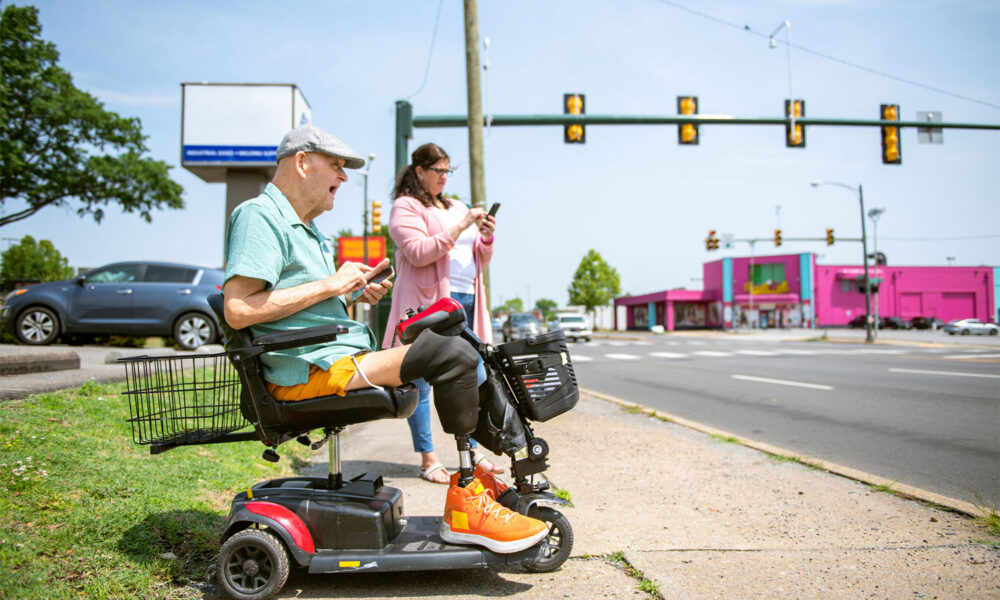It’s hard to keep up with the latest stories on extreme heat. 2023 was the world’s hottest year—a record that is likely to be broken by 2024. And just last month, NASA recorded the hottest day on record ever on July 22, the latest in a 13-month stretch of consecutive record-setting weather. These events are part of an upward march in extreme heat in the US that has turned summer into a veritable danger season. And what gets lost as we confront these record-breaking conditions is the reality that heat—like many other effects of climate change—has a disproportionate impact on older adults. But the good news is that when we center our heat response and broader climate resilience efforts in reducing the impacts to older adults, we also create safer communities for all.
Unique risks
The toll that climate change is taking on older adults is evident in the fatality rates recorded from an array of climate-fueled disasters:
- In July 2024, older adults accounted for 75% of the fatalities resulting from power outages following Hurricane Beryl in Texas. The deaths occurred in the days and sometimes weeks after the storm during which people were unable to cool their homes and power in-home medical equipment.
- In December 2023, atmospheric rivers hovered over Ventura County, California, flooding nearly 500 homes largely occupied by low-income households, undocumented people, and older adults. The relatively small size of the event failed to trigger traditional FEMA disaster relief, and many older residents lack the savings to rebuild or the willingness to take on a loan that may result in the loss of their largest remaining asset.
- A year ago, older adults represented 73% of the fatalities in the Lahain’a wildfires, in large part because they live with mobility challenges because of advanced age or disability, or the economic vulnerability that comes with living on a fixed income with little or no retirement savings.
Heat may be the topic that captures our attention this summer—and deservedly so. For older adults, hotter weather poses unique risks because older bodies are less able to regulate heat. They may also have pre-existing health conditions or take medications that make them more vulnerable to rising temperatures. That helps to explain why 80% of the 12,000 heat-related deaths each year in the US are among people over 60.
Higher costs
But a hotter planet threatens older adults in other ways, too. More hot days also mean greater demand for cooling, which in turn leads to higher utility bills that people of limited incomes can rarely afford. Already, low-income people pay 8% of their income on utilities—2.5 times more than the national average. For the 15% of older adults who live near or below the poverty line, this remains an untenable expense.
More extreme weather also means more frequent and deadly hurricanes, and increased flooding— and therefore higher insurance premiums as the insurance market adjusts to our new climate realities. Together, the rising cost of utilities, insurance, and rent or mortgage means that older adults are more housing cost-burdened than ever before. Today, more than half of all older renters pay more than one-third of their income on housing, as do more than one-quarter of older homeowners.
The effects of climate change on older adults are rarely made a centerpiece of climate resilience planning—despite the fact that people over 65 years of age are the fastest-growing demographic in the US. By 2030, older adults will outnumber children for the first time ever, a demographic shift that Newsweek described as a “population time bomb,” and one that will coincide with the growing risks of climate change.
Few communities consider the needs of older adults when planning for climate disasters if they plan for these disasters at all. While some communities and states have committed to becoming more “age-friendly” in an effort to create places where people of all ages can thrive, not nearly enough consider the climate-related impacts on housing, transportation, and connectedness that will shape how or if older adults can safely age in place.
Plan for an aging US
It’s not too late to get ahead of this challenge. Communities must learn from our recent experience of how climate change differently impacts older adults, and commit to climate resilience planning that centers their needs. When local and state leaders embrace solutions that work for older adults—like incentives to make homes more energy-efficient to reduce utility costs, and public transit systems that work better for non-drivers in times of emergency—benefits accrue to all.
It all begins by getting to know who the older adults are in your community and what they need. That means looking well beyond the two percent of older adults who live in nursing homes and assisted living, and identifying the housing, transportation, communication, and service needs of the 98% who live in the community, often alone. Invite older adults—and those who represent them, like Area Agencies on Aging—to be a part of climate resilience planning. Leverage resources such as those offered by AARP and FEMA on the topic of disaster resilience for older adults to start a broader conversation on climate risks to older adults, and how those risks can be mitigated—before, during, and after disasters. There are two things that we can be sure of: our hottest days are yet to come, and we (as individuals and as a nation) will continue to age. Let’s take action now to address the ways in which those two trends intersect.

